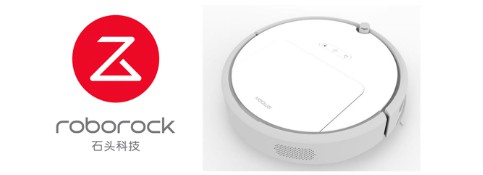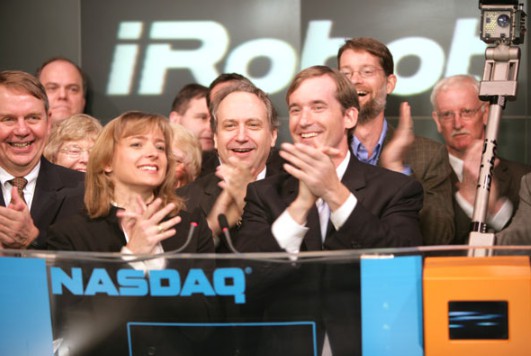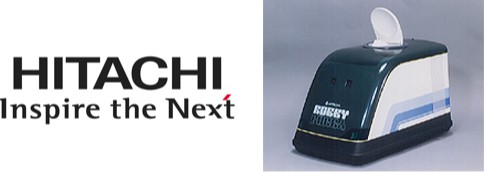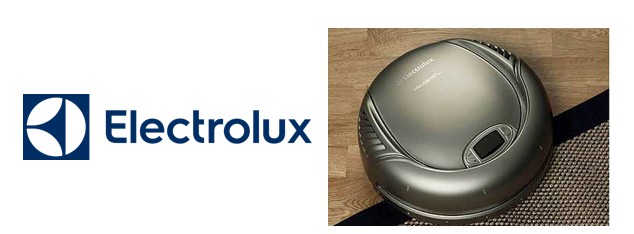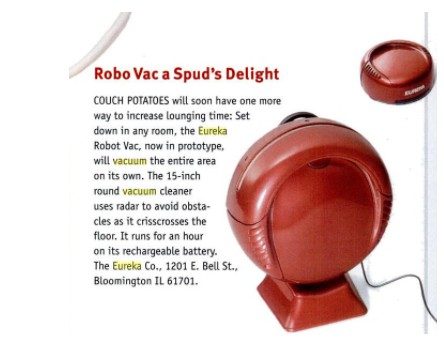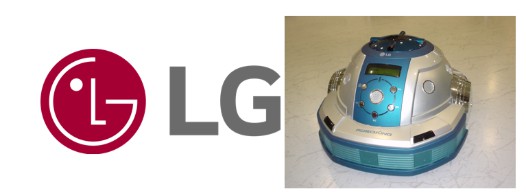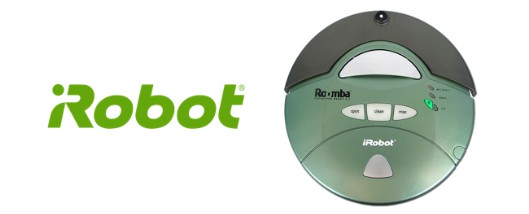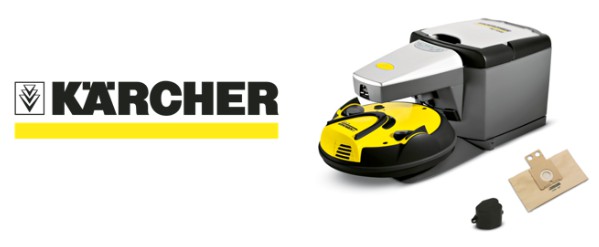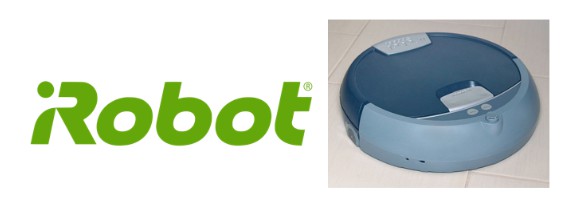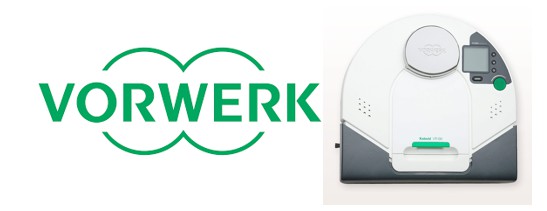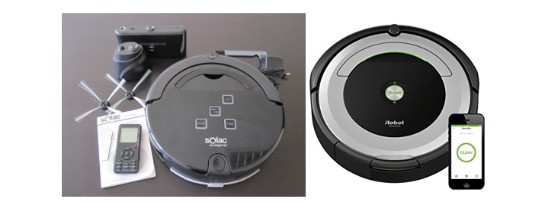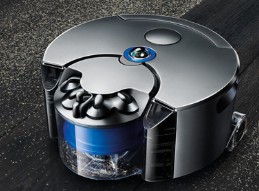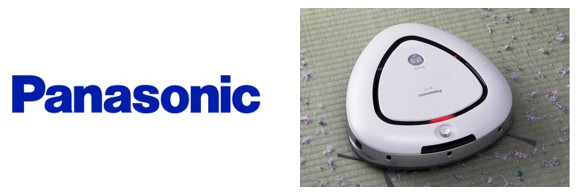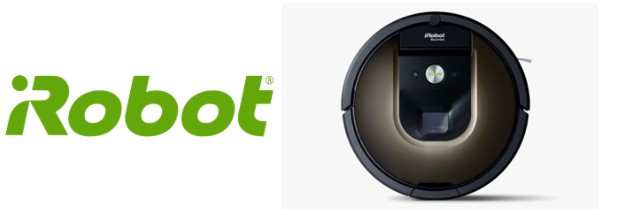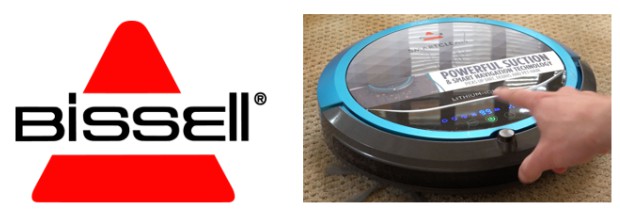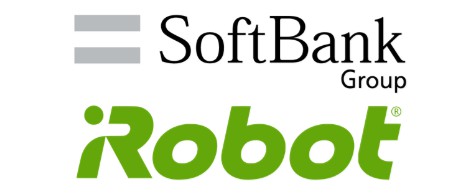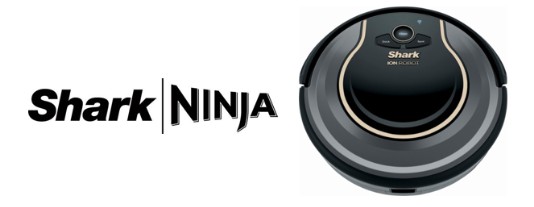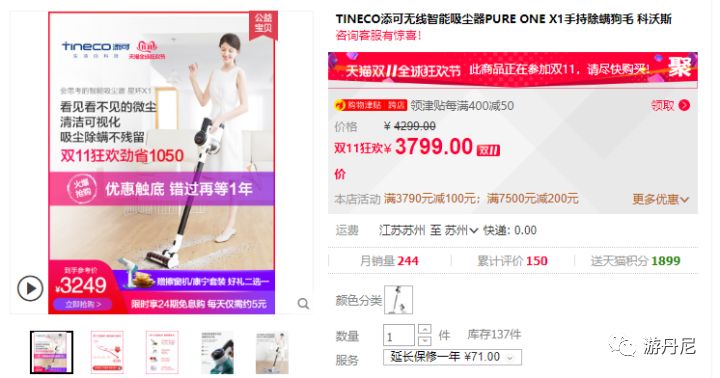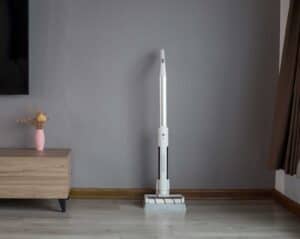In 1985, Hitachi displayed the HCR-00 sample of an indoor robot cleaner at the Domotechnica exhibition. This machine is equipped with a gyroscope and an ultrasonic radar.
In 1996, Electrolux released the trilobite robot vacuum cleaner which was similar in shape with ancient trilobites. This was the world’s first sweeping robot equipped with an ultrasonic sensor that can automatically detect obstacle locations. The price for this vacuum cleaner is approximately $2000.
In 1999, Eureka, Electrolux’s North American subsidiary launched robot cleaners at the Chicago show.
In 2001, Dyson developed the robot cleaner DC06. This vacuum cleaner has 70 sensors, 54 batteries, 3 processors, 2 huge wheels, and a typical Dyson-style dust bucket. Critics have described it as being 5% vacuum cleaner and 95% robot. This is because it is too big, bulky and there are huge problems during the actual production. The price for this vacuum cleaner is as high as 6000 US dollars.

In 2001, LG released the Roboking robot cleaner, which had a similar size to the Dyson DC06. This was obviously not a good solution.
In 2002, iRobot launched a home-friendly robot cleaner Roomba, which was priced at $199.95. This robot cleaner opened the era of intelligent sweeping robots. The first-generation Roomba 400 series uses a random collision-type cleaning mode. Roomba has achieved great success in the market since it was launched.
In May 2002, German company Karcher released the RoboCleaner which was priced at around $1300. The difference between RoboCleaner vacuum cleaner and other models is that Karcher models have a huge charging base. The Robocleaner can automatically suck dirt from the robot cleaner into a paper bag in the base, which saves time for cleaning.
In May 2003, Hitachi released Robot Cleaner HCR-03.
In 2003, Samsung released robot cleaner VC-RP30W.
In 2003, Taiwan Mausutek entered the sweeping robots industry and launched the V-Series vacuum cleaners. Mausutek’s robot cleaner shipments were close to 700,000 units in 2015.
In 2004, Roomba sold 1 million units.
In 2004, Shenzhen Bona entered the OEM industry for robot cleaners.
In 2005, iRobot released the Scooba mopping robot.
On November 9, 2005, with great success in the robot cleaner market, iRobot was listed on NASDAQ.

In 2009, Ecovacs launched the Deebot series of robot cleaners, which developed rapidly in the robot cleaners industry to become the industry leader.

In February 2010, the Neato XV-11 robot cleaner was launched for $399. This is the first laser rangefinder that can rotate 360 degrees to scan the surrounding environment and carry out instant positioning and environmental map construction (SLAM). Based on its rotational planning of the sweeping route, the sweeping robot began to be used to clean by randomly sweeping into planned sweeping areas. The robot is able to continue cleaning from where it left off in the previous session, after recharging its batteries.
In 2010, Vorweck, a century-old German home appliance company, lend Neato around $12 million in finances.
In 2010, iRobot, an intelligent robotic sweeping robot company, announced that it had reached an agreement with Jabil.

In 2011, Vorwerk released a model VR-100 robot cleaner for its OEM.
In 2012, Shenzhen ILIFE CO. started to manufacture robot cleaners.
Between 2011 and 2013, Ecovacs’ actual controller, Qian Dongqi, established an overseas listing structure. Ecovacs Robotics was named as an overseas listing entity in 2013. In 2015, Qian Dongqi launched the share listing plan and dismantled the overseas equity structure.

In 2013-2016, the market share for Ecovacs robot cleaner products, both online and offline, always ranked first in the domestic market. This was according to the CMM monitoring data.
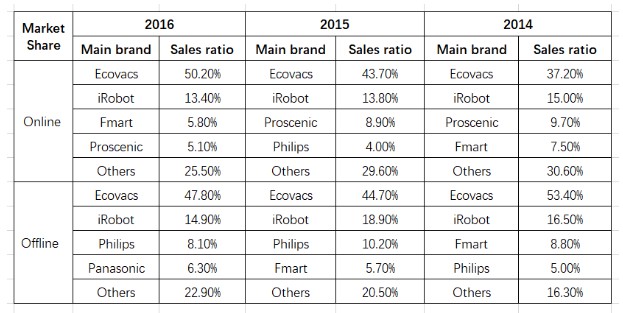
In June 2013, iRobot filed a lawsuit in a German court against five other companies that infringed iRobot’s Roomba patents.
The five companies were: Pardus GmbH, Emparanza Galdos International SA, Elektrogerate Solac Vertrieb GmbH, Electrodomesticos Solac SA, and Celaya.
The figure below compares two models.
In September 2013, iRobot sued Shenzhen Silver Star Technology and filed an injunction against the company in a German court at the IFA in Berlin. iRobot allowed Shenzhen Silver Star to withdraw the infringing robot MyGenie series from the market at IFA.
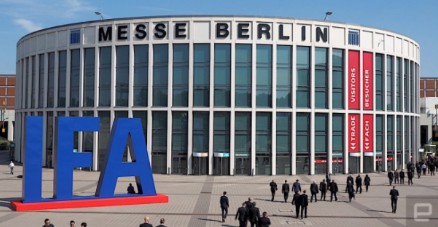
In September 2014, Dyson released the robot cleaner 360 Eyes for a price of US$999. After a decade, the well-known traditional vacuum cleaner brand, Dyson, returned to the sweeping robot market in which they had failed a year before launching the high-end robot cleaner 360 Eyes. The company removed more than 70 sensors from the DC06 model instead of using the top-mounted camera to observe and analyze the surrounding environment. The algorithm used to design the map of a room by navigating and judging the position and location of the landmarks in the image in order to determine the best movement route. However, Dyson 360 Eyes received complains about its noise and height challenges that prevented the bottom area of sofa sets from being cleaned.
According to a survey agency, the retail sales volume of China’s robot cleaner market in 2015 was about 5 billion yuan. The agency predicted that this figure would reach 7.5 billion yuan in 2017 and increase to 12 billion yuan in 2018.
Robot cleaners have a huge market space. Presently, USA and China are the major markets for robot cleaners. Even with the US being the most developed market, the penetration rate of household intelligent robot cleaners is 16%. The penetration rate of intelligent robot cleaners in the domestic coastal areas is 4% – 5%, while inland penetration is as low as 0.5%.
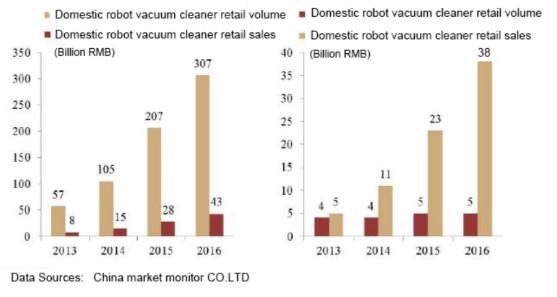
In 2015, Panasonic launched a triangle-shaped robot cleaner, Rulo.
In September 2015, iRobot launched the newest robot cleaner Roomba 980 priced at $899. In this new product, iRobot used the latest iAdapt 2.0 pathfinding technology. Its most important component technologies are VSLAM and Global planning function. At the top of the Roomba 980, a camera with a rotational angle of approximately 45 degrees is installed. Captured images are processed by the positioning algorithm to identify surrounding features.
In October 2015, Bissell, a vacuum cleaner brand with more than 140 years in North America, launched a smart robot cleaner.
In 2016, iRobot set up an office in Shanghai to enter the Chinese market.
In 2016, 20% of vacuum cleaners in the North American market were robot cleaners.
In August 2016, Xiaomi’s Roborock Technology launched the Mi’s robot cleaner. This cleaner uses a laser radar navigation technology and algorithmically uses a global planning function. Roborock sold the model for 1699RMB while their competitor’s price was above 4000RMB. This made the Roborock’s model popular in the Chinese market, with total sales exceeding 1 Billion RMB.
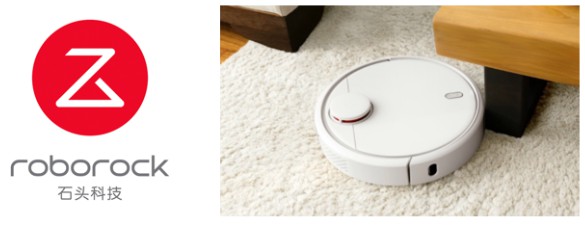
At the beginning of 2017, China Dive Company Limited disclosed a major asset restructuring plan. The company intended to issue 12.0596 million shares to the counterparty at a price of 83.2 yuan/share. The total price of 1.02 billion yuan was to be used to purchase 100% of Bonarobot’s shares. Bonarobot Robot’s main business is R&D, production, sales, and service of intelligent cleaning service robots. In 2015, Bonarobot had net assets of 1.02 billion yuan and a revenue of 58.9077 million yuan. The total performance commitment from 2017 to 2019 was 246 million yuan. Bonarobot is a founder of Prosenic which is another brand of robot cleaners.
On July 15, 2017, Softbank Group acquired 5% of IRobot’s shares. Upon receiving this news, IRobot’s share price increased significantly.
On July 20, 2017, Fmart was listed on the NEEQ. The sales volume for Foton Robot Cleaners was over 70 million.
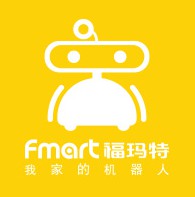
In September 2017, US robotic cleaning manufacturer iRobot initiated lawsuits against 11 competitors and accused them of infringing on the company’s six technology patents, (US valid patent registration numbers 6809490, 7155308, 8474090, 8600553, 9038233, 9486924). This led to the launching of 337 investigations with the issuance of limited exclusion orders and prohibitions. The accused included three Chinese companies and eight foreign companies. Among the accused companies were Shenzhen ILIFE Technology Co. Ltd., Suzhou Real Power Electric Co. Ltd., ShenZhen Silver Star Intelligent Technology Co. Ltd., Bissell of the US, Hoover (TTI subsidiary), U.S. Royal Appliance (TTI subsidiary), bObsweep (U.S. and Canadian companies), Black & Decker, Taiwan Matsutek, MSI etc. MSI subsequently reached an agreement with iRobot to exit the robot cleaner market.
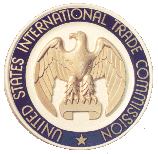
In September 2017, Shark Ninja, a well-known small household appliance brand in North America released the first robot cleaner, ION Robot, for $299.
It is widely believed that iRobot will face significant pressure in the market, resulting in iRobot’s stock price to fall by more than 15%.
On September 15, 2017, China Dive announced that it had terminated the purchase of shares of Guangdong Bona Robot Co. Ltd.
On September 22, 2017, Vorwerk (this company’s turnover had reached US$3.6 billion in 2016) announced that it had acquired the remaining shares of Neato Company which had been ranked second in the robot cleaner market. Neato became a fully owned subsidiary of Vorwerk.

In October 2017, media reported that hackers could control LG’s Hom Bot robot cleaner camera through home hack vulnerabilities. This caused anxiety among consumers in regard to their privacy.

On December 22, 2017, Ecovacs submitted an IPO filing, with the founder Qian Dongqi and his son Qian Cheng being the largest shareholders.

At the end of 2017, Matsutek used VSLAM patent of Taiwan’s Industrial Technology Research Institute and sued iRobot at China’s Intellectual Property Office. Finally, Matsutek Industrial and iRobot reached a settlement agreement.
On March 20, 2018, the Ecovacs robot IPO was approved. According to the Ecovacs prospectus, Ecovacs sales amounted to 1.966 billion yuan between January and June 2017. Shenzhen life Technology was the largest robot cleaner OEM supplier for Ecovacs in 2016, with sales amounting to 490 million RMB.

In March 2018, Roborock Technology launched a sweeping robot at a price of RMB999, with intentions to snatch the low-end robot cleaner market. Can this product continue with its glory?
